
To get a profound SEO promotion, the first thing you must do is analyze your web-site’s niche. By the way, this topic was thoroughly examined by the guys from SeoProfy during the conference called “Heading West”; therefore, their research was taken as a basis for this article. A detailed analysis will allow you to estimate a general position of things and define the tiniest nuances of the market you are operating in. Also, you will learn what ways of promotion are the most popular and effective.
You will need 1 or 2 weeks (on average) to go through the following concepts. After you finish, you will have enough knowledge to answer these questions:
- Is there any demand for your niche in the market?
- What is its scope?
- Who are your potential competitors?
- Are there any perspectives? What are they?
- Is it really worth working in this niche?
- What is needed to achieve success in this niche?
If the chosen segment is found to be appropriate and needed in the market, the next step is to create a website and get into its subsequent promotion through the means of various types of optimization.
Analyze TOP Searching Results
This method will allow you to scrutinize the key information about your niche. For the analysis, we will use highly-frequent (HF), intermediately-frequent (IF) and low-frequent (LF) searching requests. Ideally, you have to go through at least 20 web-sites: TOP10 HF and TOP10 IF or LF. Obviously, you have to evaluate every web-resource; this will take you from two to three weeks. However, it depends on your niche; it might happen that general assessment will be more than enough to see the whole picture.
At the same time, you have to consider the following points:
- Detect the TOP result in your region
In order to do this, use the following instruments:
1. VPN
Here, it will be more convenient to use the service called “Hidemyass” (non-free). It enables you to get an access to needed region (when you enter VPN, make sure you do this from the same region) and look through all the useful data related to it.

2. Google Preview Tool
It is truly a great option (unlike the previous one, it is free). This service, in particular, is concerned with contextual advertisement for a given region. In spite of this, it will still be of a great use for us.
First and foremost, you have to follow this link: https://adwords.google.com/d/AdPreview/. After this, type in needed key request; don’t forget to choose region and language. The system will show related data.
The result of your request:

3. AOL.com
Truthfully speaking, this is the most effective service for seeking the TOP results. All you have to do is follow the link: http://aol.com/ and type in the key request. The system works in the way that allows to detect results that are not “locked” by the location. However, geo-dependent results are still lacking a proper refinement.
- Separately, monitor HF, IF and LF
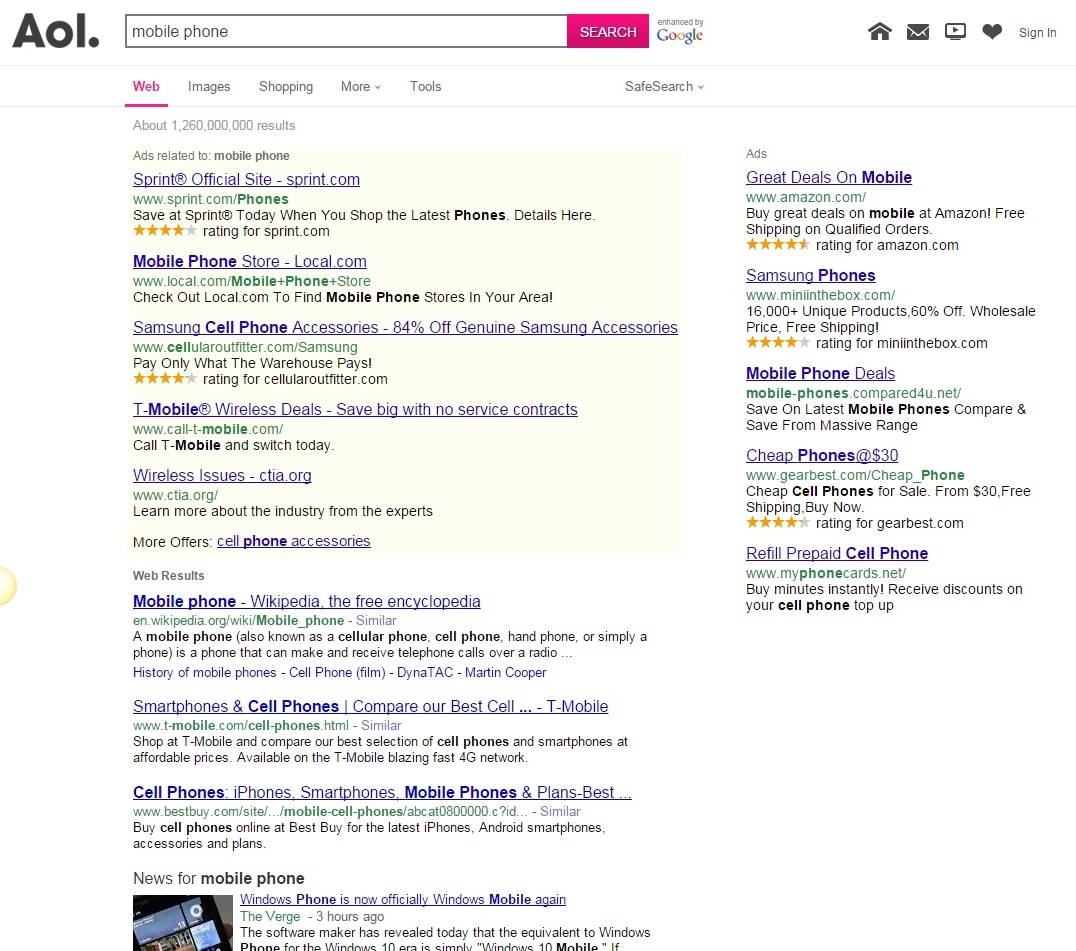
Working here, you have to keep in mind two things:
- Looking through the results, you are analyzing the TOP requests that are frequently demanded by the Internet community. At the same time, you come across brands that are of lower quality as well. So, you receive reliable and detailed info about your niche.
- In order to understand to which category a given request is predisposed, take either number of words (in it) or relative popularity into account. Therefore, HF requests are 1-2 words in length with more than 1000 requests in a month. IF, in turn, are 3-4 words on average with 300-500 request during a regular month. Lastly, LF are more than 5 words and 300-500 searches throughout a 30-day period. Obviously, these data may differ; it all comes down to the peculiarities of your chosen niche; whether it is in demand or not. On average, though, this is exactly how the picture looks.
Also, you will have to point out to which type of resources your analyzed sites refer mostly. For instance, it may be blog, online shop, forum or social network.
Assessment Of Inverse Links
Having distributed the request to groups and sorted them by categories, the next step would be to study the following concepts:
- The list of anchors
- Dynamics
- Type of links
- Donor’s trust
All of it is done to get some insight from your competitors. In particular, find some profitable resource for your web-site.
The following sources will help you out:
- Ahrefs.com (non-free)

- Majestic SEO (non free).

- MOZ (non free).

- SeoQuake (free).
- RDS bar (free).

The main principle of their work is focused on the installment of plugins, which is a very useful feature. It shows the amount of inverse links under each web-site. Apparently, this is incredibly useful, since it allows to study every “representative” of a TOP result in detail.
If you are intended to work with the first instrument, bear in mind the following points:
- The list of anchors. It may be depicted in various ways. Below is shown the most common method.

2. Domains transferring you to an analyzing resource (Domain Rank). Having sorted it out (from largest to smallest), you will be able to detect the trust domains of your niche. As a rule, it is free to leave your link on alike web-sites. Now, do the sort again, but in a reversed order (from smallest to largest). In most cases, shown resources will demand a certain payment for the ability to show your link.

If you need to optimize the deadlines of your work, it will be more than sensible to put all of the analyzing resources (TOP web-sites) into Ahrefs or Majestic SEO; by doing this, you will receive a clear table. Having done this, it would be much easier to compare and analyze all of the points. Also, you may find convenient to use Aparcer.
Study The Attendance Of Your Web-site
It is a tremendously crucial parameter that has to be taken into account. Knowing the attendance allows evaluating the scope of your niche (how needed it is for the Internet community), detecting the main sources of traffic (how do people encounter your site and from which regions your users are), and get some priceless info regarding your potential audience.
The following instruments are always there to help you out:
- Similarweb.com
- Alexa.com
- Semrush.com
- Compete.com
- Quantcast.com
If you use Similarweb, for instance, it shows general traffic and its resources. Apart from this, it sheds some light on the regions (from which the main part of your audience came) and devices (PC, tablets or phones).
Let’s analyze the algorithm used by Similarweb. We can take some TOP web-site as an example and use it in a program.
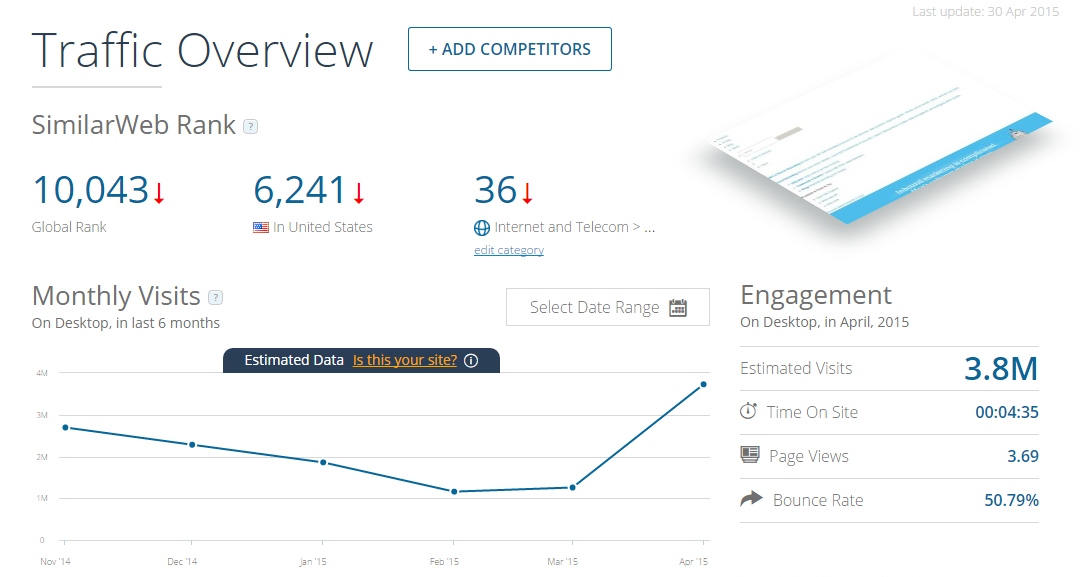
Now, let’s take a look at the sources of traffic. It may be through e-mailing, re-posting, direct entering or searching requests. The last one is perceived to be the most preferable; it tells you about the Internet users that, among the abundance of other web-resource, chose exactly your web-site.
Sources of traffic

Geographical numbers
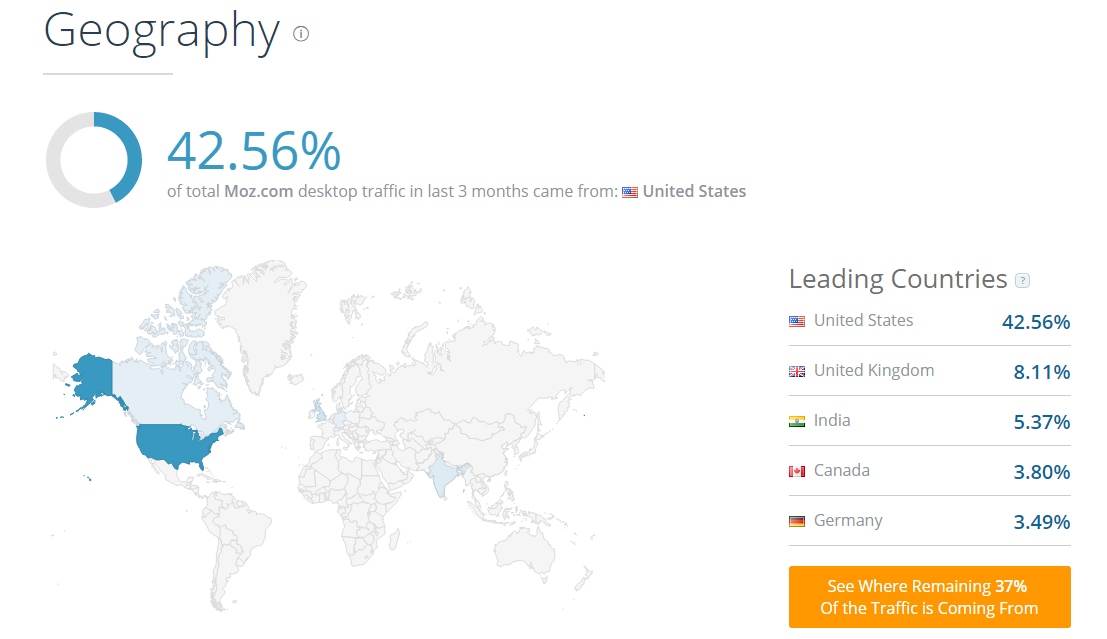
Referral traffic of your web-site
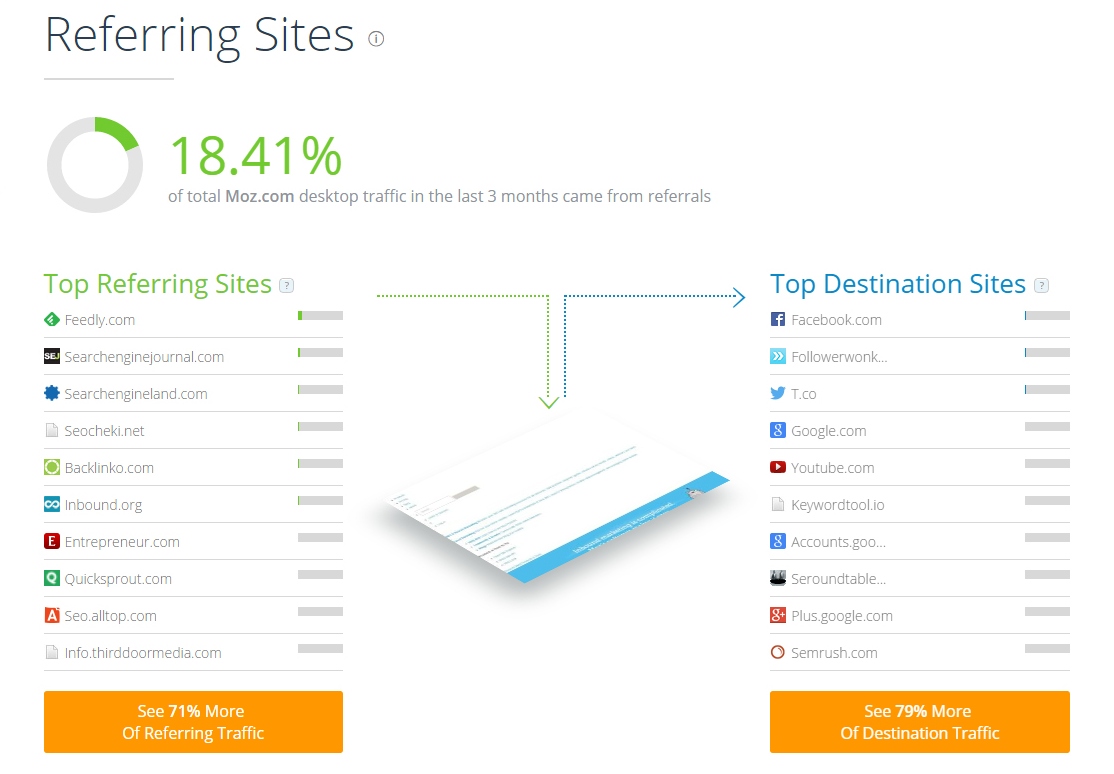
Search traffic of your web-site
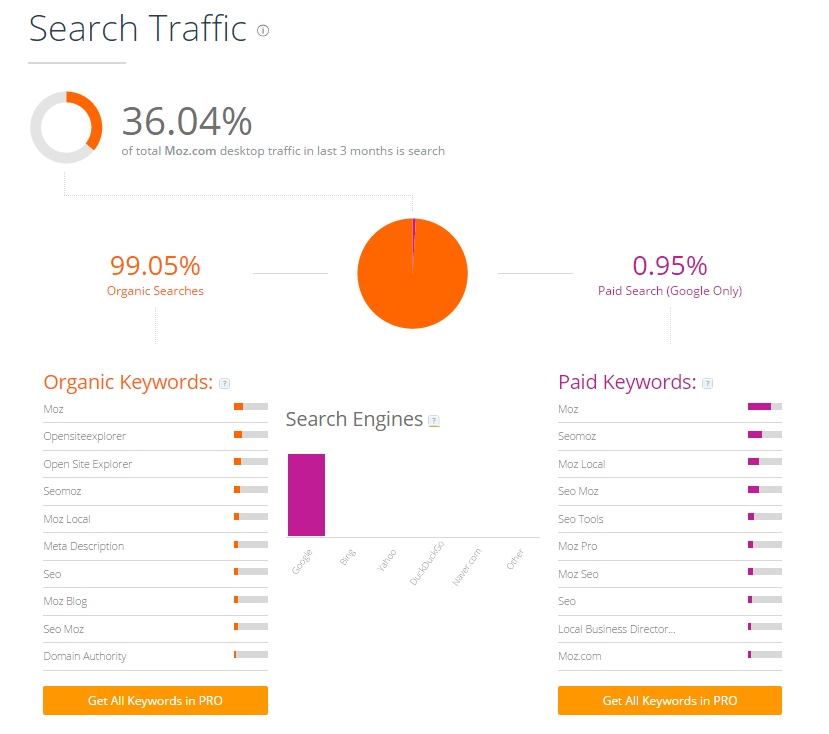
In order to get a more detailed feedback on searching traffic, it would be better to use Semrush; this service is mainly concerned with this problem.

Do not forget to pay attention to the dynamics; are there any peaks or troughs. Needless to say, you have to thoroughly scrutinize those web-resource that stand out with a gradual growth throughout the latest 6-12 months. Study them laboriously; you have to identify the reason of their success.
Study The Content
While processing though this stage, you will be confronted with the following questions:
- Which type of content is presented on TOP resources?
- Are there any data that can be classified as informational (i.e. blog)?
- If answer to the previous question is positive, you will have to analyze the subsequent articles and notes. You have to access their quality. What is their scope? Are there any nuances?
- What content is most attended?
- Do firms have special representatives that publish data? It is possible that your competitors hired an expert that deals professionally with articles and other contextual stuff.
- What is the frequency of new material? How often do new data appear?
At the same time, you have to evaluate correctly what you have just seen. Your competitors may not post some specific data simply because of lack of demand for it.
Estimation Of TOP Web-sites’ Visibility In Search Engines
Basically, this is a concluding parameter that summarizes everything that was scrutinized before. How productive are the results? How long did it take to promote your web-resource? If your “internet-creation” is presented on the first page of a searching engine, the fact that you achieved some success is obvious.
In order to get this info in Google, use already known service called “Semrush”.
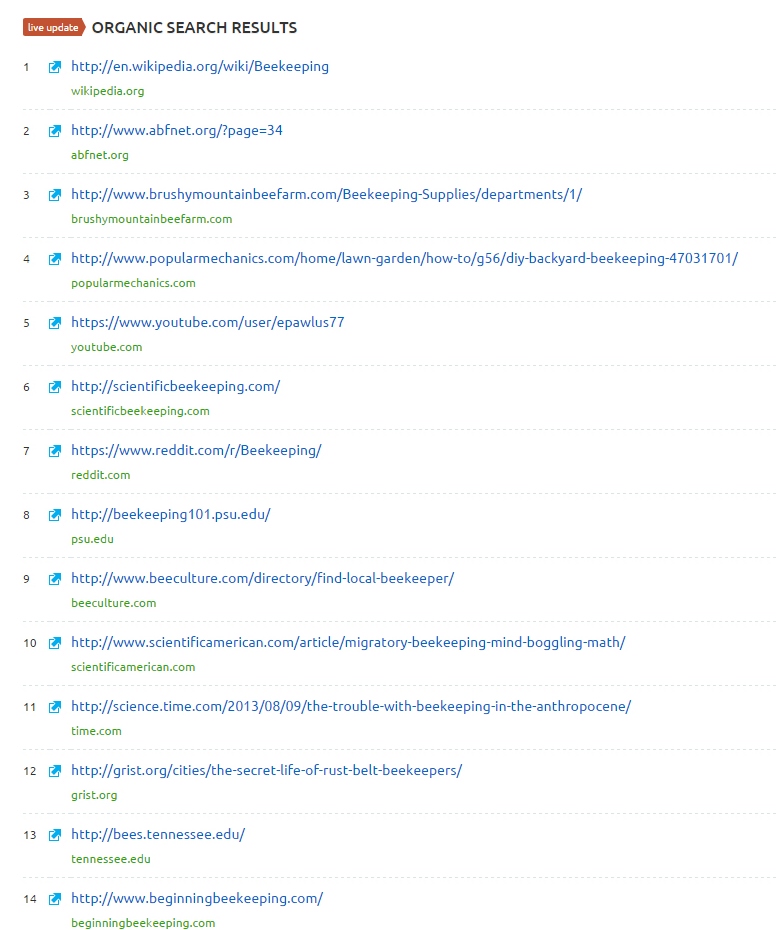
Keep in mind that you have to classify the TOP sites by types; this will enable you to compare and analyze a given data. If you don’t make use of the mentioned approach, it will be more than difficult to get an objective conclusion. Moreover, this mistake will have a crucial impact on your site’s visibility in search engines. Therefore, the comparison will just be inadequate.
Visibility, in particular, has to be checked every 1-2 years. An extra attention should be paid to resources who developed high results over short time-periods. Also, the resources that got into high rankings throughout the latest 6-12 months. Make sure to analyze them in detail and understand the reason behind their success.



